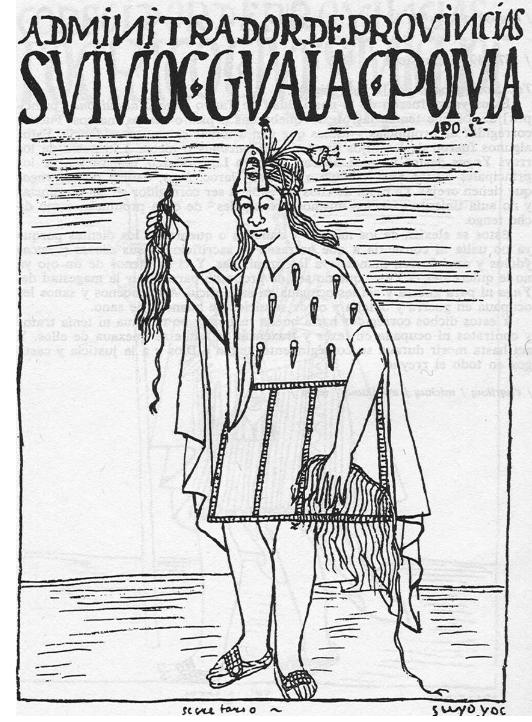
Figure 1.--This is a drawing of an Inca privincial administrator wuth quipus. It is a drawing made some time after the Conquista ariund 1585-1615, Source: Guaman Poma de Ayala. |

|
Quipu ( khipu / kipu ) are sometimes called talking knots. Quipus consisted of thick primary cords from which thinner pendant cords hung. Usually there were about 100-200 pendant cords, but some quipus had much more up to about 2,000 pendant cords. Some pendant cords and pendant cords of their own. On these pendent cords knots of various size and tied in different ways encoded information. The threads involved were done in various colors and material (llama and alpaca wool and cotton) and the knows were tied in different ways. They have traditionally been described as accounting devices used by the Inca. Current scholarship are increasingly finding that the quipus were much more. If so they may be a raadically different form of writing than developed by all other great civilizations. Early Spanish accounts after the Conquest refer to the Spanish consulting Inca khipukamayuq (quipu readers) for information about Inca history and other matters. Clearly nit just numerical data. Spanish govenor Cristóbal Vaca de Castro (1542) had khipukamayuq consulted in an effort to prepare an Inca history (1542). The inference is that there was much more information on the quipus than numerical accounts. This is very difficult to assess becuse the Spanish finally decided that the quipus were works of the deveil and had all the ones they could find burned (1583). Quite a number survived, but after the khipu readers died out, no one could read them. None of the khipu readers lefrt a manual. Which of course is not surorising as the Spamish were intent on destroing Inca culture. Sholars are now attemting to dechiper te 900 or so surviving quipus. Now there is no doubt that the quipus contained numerical information, a kind of ancient spreadsheet. But some reaserchers know that they also cointained narative information. The Harvard University has a data base of kipus that researchers are using to try to crack the khipu code. One author looking into the research underway writes, "We thought the Incas couldn't write. These knots change everything. A lost language encoded in intricate cords is finally revealing its secrets and it could upend what we know about Incan history and culture." [Cossins] A young undergraduate studebnt at Harvard has foind a kind of Inca rosetta stone. Dr. Gary Urton, who founded the hipu Data Base has begun to natch connect khipus with Spamish census data, An undergraduate, Manny Medrano, worked with a khipu from the Santa River Valley in northwrstern Peru and matchung census data. He found what looks like nanes and social staus encoded in the klhpu.
Medrano concluded that the way each cord was tied onto the khipu correspond to the social status of the 132 people recorded in the matching census document. And the colors of the strings seem to imdicate first names. [Davis-Young]
Davis-Young, Katheine. "The college student who decoded the data hidden in Inca knots," Atlas Obscura (December 14, 2017). A more detailed report was published by Medrano and Urton in Ethnohistory (January 20, 2018).
Navigate the Children in History Website:
[Return to the Main Inca page]
[Return to the Main South American Native American page]
[Return to the Main Native American page]
[About Us]
[Introduction]
[Biographies]
[Chronology]
[Climatology]
[Clothing]
[Disease and Health]
[Economics]
[Freedom]
[Geography]
[History]
[Human Nature]
[Law]
[Nationalism]
[Presidents]
[Religion]
[Royalty]
[Science]
[Social Class]
[Bibliographies]
[Contributions]
[FAQs]
[Glossaries]
[Images]
[Links]
[Registration]
[Tools]
[Children in History Home]
